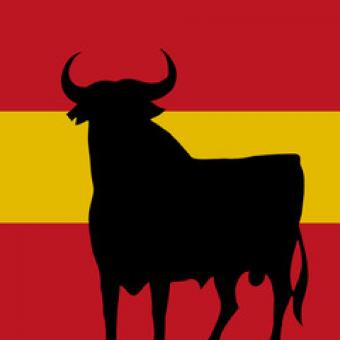
Osborne Bulls: Spain’s Iconic Silhouettes Explained
Photo From stock.adobe
Originally Posted On: https://rightcasa.com/osborne-bulls-spains-iconic-silhouettes-explained/
If you’ve ever driven in Spain then you’ll know that one of the most immediately recognisable quirks of the Spanish road system is the giant bull silhouettes that you’ll find overlooking many Spanish motorways. But what you probably don’t know is where these bulls came from, or why they’re there!
The Origins of the Motorway Bulls
Bulls are considered to be as Spanish as Sangria or year-round sunshine, so you may have assumed that the giant bulls were erected as a symbol of patriotism, or to amuse the many tourists and second home owners that regularly travel to Spain. However, the reality is that the origins of the motorway bulls is comparatively more workaday: they were erected during the 50s and 60s as giant advertising platforms for a Spanish alcohol company!
The design was first conceived by Spanish artist Manuel Prieto in 1957, who created the design that would go on to net him a fortune! The Bull was originally sketched to sell a brandy called Toro (which translate into Bull) for the alcohol brand Osborne: hence the name, the Osborne Bulls. Osborne liked the bull design so much that they commissioned 500 of them and erected them all over the country. These bulls ranged in height from 6,5 m (known as the toro grande) to 13,13 m (known as the toro gigante) and were constructed of wood boards, and had the words “Osborne – Sherry and Brandy” printed on them in oversized white lettering. Ultimately, they were replaced by metal models, which were more durable and required less maintenance.
But that’s not the end of the story of the Osborne Bulls, which in recent years have become symbols of national pride.
Taking the Osborne From the Osborne Bulls
In 1988 the bulls lost their bold white lettering, thanks to Spanish advertising laws that banned all advertising at the side of highways. But rather than remove the now iconic bulls, Osborne struck up a deal with the government that they would remove the lettering, effectively turning what was an advertising billboard into what we now know and see when driving around Spain. This deal was cemented until 1994, when a new wave of demand to ban the bull emerge, with officials suggesting that they were a distraction to drivers, meaning that they were a safety risk that should be removed. But this announcement prompted public outrage, and an ultimately successful campaign was launched to save the bulls.
They were considered a symbol of the country, and a part of Spanish culture, and the Spanish people didn’t want to see their beloved bulls disappear! According to surveys conducted at the time, an incredible 75 percent of Spanish people were in favour of the bulls staying exactly where they are. What’s more, the symbol was no longer simply the symbol of an alcohol brand: the Osborne bull had become so popular that, it was determined in a 2005 lawsuit, it had been “converted into a national symbol that can be used without the company’s permission and is artistic heritage that belongs to the Spanish peoples, integrated into the countryside.” As a result, the same bull symbol that you see on the motorways when you’re driving from town to town can also be spotted on t shirts, baseball caps, and other tourist souvenirs. It had become a symbol of a country rather than a symbol of one individual brand.
Unpopularity for the Iconic Bull
Whilst in much of Spain the iconic Osborne bull is not only much-loved but also revered as a symbol of Spanish culture, it stands to reason that in some autonomous regions (such as Catalonia and the Basque Country) the bulls are not popular. Because they are a huge symbol of Spain, they are a symbol that those seeking independence within these regions would rather forget!
In 2007, members of the Catalan Brotherhood of the Black Flag spent several hours sawing the leg away from a toro gigante on El Bruc, a hill close to Barcelona. In the end, they succeeded in bringing down that last remaining Catalonian Osborne bull. But not to worry: If you want to see a bull of your own though, there are still 90 across the country for you to find and enjoy.
Are you thinking of moving to, and driving in, Spain? Want to own your own dream Spanish bolt hole? We’re here to help! Our local property experts are perfectly placed to help you to turn your dream home search into a reality.
